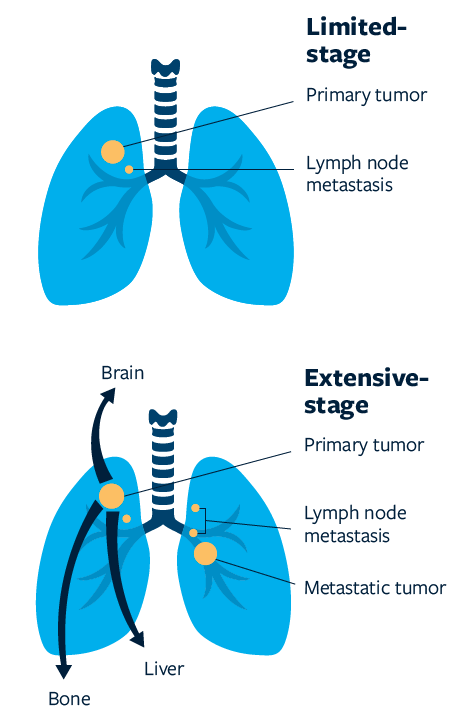Symptoms
- Persistent cough
- Chest pain
- Hemoptysis (coughing up blood)
- Dyspnea (shortness of breath)
- Fatigue
- Paraneoplastic syndromes such as SIADH (Syndrome of Inappropriate Antidiuretic Hormone Secretion) are common in patients with small cell carcinoma.
Other symptoms may include dermatomyositis, Horner's syndrome (Pancoast tumour), hypercalcemia, hypertrophic osteoarthropathy with clubbing of the fingers, and blood clots (Washington et al., 2020).



